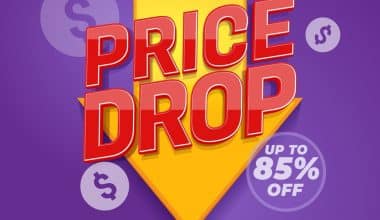Many people lump sales and marketing together, but the two processes are mainly independent. In its basic form, marketing increases potential customers’ awareness of your organization and brand. Sales are converting potential customers into actual customers to turn that audience into a profit. Here are some key takeaways to help you understand the difference between sales vs marketing vs. business development and advertising funnel strategy.
Marketing Vs Sales
The activities that lead to the sale of goods or services are referred to as “sales.” Salespeople manage relationships with potential clients (prospects) and provide prospects with a solution that leads to a sale.
And marketing includes all activities that help generate interest in your business. Market research and analysis are used by marketers to understand the interests of potential customers better. Marketing departments run campaigns to attract customers to a company’s brand, product, or service.
There are a few key differences between marketing vs sales. For example, marketing focuses on the public or larger groups of people, whereas sales focus on smaller groups or subsets of the public.
What are Sales?
The process of researching, prospecting, and developing leads that result in selling a product or service is known as sales. Sales are focused on the present and aim to close the deal and make the sale. The primary goal of sales is to acquire new customers and increase the value of existing ones.
Some businesses divide the responsibilities of sales teams by forming a sales development team that gathers and evaluates leads for sales quality.
What is Marketing?
Marketing is the process of comprehending the market from the customer’s standpoint. The primary goal of marketing is to find new customers, understand their needs and desires, and create materials that demonstrate how the business meets a need or solves a problem. “Marketing” directs an organization toward groups or channels where it can gain a competitive advantage.
Sales vs Marketing Differences
We need to understand the core elements of each department to create a cohesive partnership difference between marketing vs sales.
Process
Whether you’re writing a marketing or sales plan, both will include information about the company’s history and overarching goals and initiatives. The plans then delve into the aspects of the plan that are unique to each department.
The marketing plan specifies the product, price, who will buy it, and where it will be sold. This is also referred to as the marketing 4Ps: product, price, place, and promotion. Goals are established, marketing channels are selected, and a budget is established for the campaigns that the marketing team intends to pursue.
Sales plans detail the sales process, team structure, target market, and objectives. Furthermore, the sales plan details the action plan, tools, and resources that will be used to achieve these goals.
Goals
What are the primary objectives of marketing vs. sales? Both departments are primarily concerned with generating revenue for the company.
Marketing’s primary goal is to see the big picture and promote the company, product or service, and brand. Marketing departments are in charge of pricing products and communicating how they meet the needs and desires of customers. Because campaigns can last several months, their goals are frequently long-term.
In sales, the emphasis is on meeting quotas and sales volume targets, which are usually short-term. Sales targets are frequently measured month after month. Targets are established, and sales management determines how much their department, teams, and individual salespeople must sell to meet the overall goal.
Resources and tools
A CRM database is a tool that sales, marketing, and the company can use. The database assists all departments in managing relationships with contacts, regardless of where they are in the customer lifecycle.
Both business units can benefit from social media. Social media can be used to promote content in marketing, and it can also be used in sales as part of a social selling strategy.
Strategies
Marketing strategies are typically based on gathering information about their target audience to determine what works and does not. Once the market team has determined who they want to reach with a particular campaign, they can test different strategies. Internet marketing, print marketing, blog marketing, and focus groups are among the most popular marketing strategies.
Connecting with potential customers, talking and listening to them, and then converting them into paying customers is the foundation of sales strategies. A salesperson will usually contact a prospect via phone, at a networking event, or online. Then, depending on the scope of the product or service, they will pitch it to them in the hope of obtaining a sale.
Marketing vs Sales vs Business Development
Businesses use various approaches to customer relationships through sales, business development, and marketing strategies. Each segment, or department, is distinct from the others and serves a distinct purpose in the business. Although the segments take different approaches focusing on different aspects of the business, they work best together. In this session, we will discuss the differences and similarities between sales vs business development vs marketing and how each contributes to the company’s growth.
What is Business Development?
Through fruitful partnerships, business development works to identify, attract, and acquire new businesses. The primary goal of business development is to cultivate and leverage relationships to capitalize on business opportunities. Business development, excluding customers and suppliers, seeks to form partnerships with other businesses to sell their products to the customers of the other businesses.
Business development broadens the organization’s market reach and fosters the relationships that sales teams seek. A business leader might speak at a networking event and then hand out business cards or paraphernalia to potential partners for follow-up.
Uses of Sales vs. Business Development vs. Marketing
While all three strategies are critical to the business’s overall success, their functions serve specific goals or outcomes. Successful businesses rely on the outcomes of all three strategies to form a complete picture of the company’s strengths, plans, and how it will achieve business goals.
When you examine the individual roles of sales vs business development vs marketing, you can see how they all contribute to the overall goal of growing and supporting the business.
Business development’s role is to:
- Find strategic partners
- Establish mutually beneficial relationships.
- Bring in new business
Marketing’s role is to:
- Discover new services or products
- Inform customers about the business and its advantages.
- Create a consistent messaging and branding strategy.
- Create advertising and media to reach out to customers.
The role of sales is to:
- Determine decision-makers
- Explain how the product will meet a need or solve a problem.
- Complete the transaction and make the sale.
Differences and Similarities Between Sales Vs Business Development Vs Marketing
Sales vs business development vs marketing all use similar strategies in different ways. They each use controls and measurements to assess their successes and identify ways to improve their strategies. While sales, business development, and marketing all share strategies, it is intended that distinguishes them:
- Sales: Immediate customer requirement
- Business development: relationships and collaborations with other companies.
- Marketing: Prospective customers and client retention
Sales, business development, and marketing are all similar in that they all create a plan to achieve success based on the department’s objectives. Each role approaches customers with the customer’s best interests in mind, but the individual tactics of sales, business development, and marketing complement one another.
Sales vs. Marketing vs. Advertising
Understanding the similarities and differences between advertising vs sales vs marketing can help you choose a career path. In this session, we define advertising vs sales, describe the differences, outline the similarities, and demonstrate how marketing relates to advertising vs sales.
What is Advertising?
An advertisement company that utilizes advertisements in print, television, and billboards to communicate the benefits of products and services to consumers and businesses. Advertising aims to raise consumer awareness of a brand and its products. Increased sales volume can be achieved through effective advertising.
Advertising vs. Marketing vs. Sales
Here’s the thing: sales vs advertising are not synonymous; while they have the same parent (marketing, by the way) and a similar goal of business growth, they are fundamentally different.
Many smaller businesses see advertising as a means to supplement their sales. Advertising can help potential customers learn about the company’s products and services. On the other hand, sales seek to close the deal with those customers and persuade them to commit. Do you see the difference yet?
Here are a few more distinctions between sales vs advertising vs marketing.
The one against the many
Were you aware that sales are more personal than advertising? Customer interaction is unavoidable, from phone calls to in-person interactions. Sales have direct access to customers, allowing for a more personalized experience and interaction with the product. Advertising, on the other hand, is impersonal. It uses one-way communication and aims to reach a large number of people at the same time. Numerous advertising mediums are available, such as billboards, television, the Internet, radio, and so on.
Pull vs. Push
Why do businesses rely on sales and marketing? Simply put, you need both to succeed in business. The difference, however, is in the function. Let us illustrate this with an example. Sales representatives go out and promote the company’s products. Wholesalers then take up the baton and push the product onto retailers, who in turn push the product onto consumers. Conversely, advertising pulls products through various distribution channels to deliver a brand’s distinct message to consumers. As a result, consumers desire the product and exert pressure to obtain it.
Priorities
During events and presentations, sales introduce any product’s key benefits and features. They may even compare their product and its features to competitors’ similar products. What exactly is the objective? The objective is always the same: close the sale. Advertising serves a different purpose. It is intended to adhere to the AIDA principle (attention, interest, desire, and action). Advertisers may use catchy headlines or sounds to entice potential customers. They also dabble in writing and creating compelling copy to keep the consumer’s attention. Advertisers may then ask the consumer to imagine herself using the product to elicit desire.
Frequency
Last but not least, there is the issue of frequency. Sales are typically less frequent than advertising and cannot deliver a consistent message like a good advertisement. While a sales representative may only see a customer once or twice (depending on the product’s need), an advertisement has a long reach and impact.
Marketing vs Sales Strategy
Here are the main differences between the marketing strategy vs the sales strategy:
Goals
The goal of the marketing strategy is not to generate sales. Instead, it’s about meeting potential customers and raising their awareness of the products, services, and company and the opportunities available to them all. Marketing practices are designed to assist but not to generate sales. This is because not every visitor to your website or company is a good fit for your product or service in your target market.
Any sales strategy has a simple goal: to make sales. It is a goal, but it is much more complicated than that. Future buyers rely on sales teams to maintain partnerships and guide them to a purchasing decision. A sales strategy may also include techniques for converting one-time customers into repeat buyers or sources of referral.
The approaches
The marketing strategy generally involves:
- Recognizing products and/or services
- Identifying and describing the target customer
- Supply and/or resource costs
- Determine how you will market your services and/or goods.
The sales strategy generally involves:
- Create a sales action plan.
- Determine the Distribution Method
- Define team organization – countries, etc.
- Establishes revenue projections
The person in charge
The marketing strategy is generally set by the CMO (Chief Marketing Officer) or VP of marketing, but it is guided by many marketing team members. This is because the marketing team interacts directly with groups influencing customers, such as product, product marketing, service, and sales.
On the other hand, the sales strategy is determined by the vice president of sales or the chief revenue officer. Sales executives and new business owners then introduce it. Instead of engaging with the marketing target group, salespeople typically work on a segment. As a result, the sales team will speak directly to customers or communicate with a few qualified leads simultaneously.
Different individuals oversee both strategies. It’s simply the name of a different position.
How much time will it take?
A marketing strategy is a long-term, forward-thinking vision and an overarching game plan of any company or business with the underlying goal of recognizing consumer desires and wishes to achieve a sustainable strategic edge.
A sales strategy is typically short-term. A sales strategy is typically developed after the marketing strategy. Depending on whether your sales team is meeting or exceeding sales targets, you may need to tweak this technique occasionally.
Scope of work
The scope and duration of the work can also demonstrate the difference between sales and marketing. Sales team jobs are typically short-term, whereas marketing team jobs are typically long-term.
This is due to the marketing team’s need to maintain harmonious relationships with product marketing business partners and vendors. An effective marketing strategy necessitates constant contact. Everyone on the team wants to know how the brand campaign will help the business meet its overall goals. In addition to tools like market models, demographic studies, and competition analysis, the emphasis should be on promoting brand promise to consumers.
Priorities and functions
These two divisions’ priorities and work functions also show a difference between sales and marketing.
The difference between these two positions regarding work priorities is in the activity targets. The priority of the marketing team is to reach out to customers and develop positive relationships with them so that they will become loyal customers. You can imagine a clear advantage if several large companies became regular customers of your company’s products.
Marketing Funnel Vs. Sales Funnel
A funnel is the series of steps that a customer takes from being a prospect to becoming a buyer. Simply put, it is the sequence of events that occur before a customer purchases the desired product or service. Is there a difference between a marketing funnel vs a sales funnel? Before we answer this question, let’s define these terms.
What is a Marketing Funnel?
Marketing is an essential business function that allows brands to gain visibility and a competitive advantage over their competitors. A marketing funnel, as such, is a system that guides potential customers through the entire journey—from the first time they interact with a brand to the point where they develop the desire to purchase a product or service.
What is a Sales Funnel?
The marketing funnel typically focuses on introducing a brand to a wide range of audiences. Its goal is to attract prospects who can easily convert into buyers. When such prospects are identified, they become interested in the product or service and enter the sales funnel. At this point, the prospect has evolved into a sales prospect.
The sales funnel is the system that moves a sales prospect from the takeover stage (marketing) to the conversion stage. The funnel is at the narrowest point of the marketing funnel’s cone shape.
What is the Difference Between Marketing Vs Sales Funnel?
A distinction must be made between a marketing funnel vs a sales funnel. These terms are used interchangeably, and separating them is difficult. The context in which these terms are used appears to be the only significant difference between them.
Sales and marketing are typically two distinct functions. Each has its distinct journey map that outlines a prospective customer’s progress. Marketing generates interest, and the bottom of its funnel corresponds to the top of the sales funnel. As a result, marketing activities that raise awareness and generate product demand power the sales funnel.
However, many businesses combine these functions, making it increasingly difficult to distinguish between a sales support marketing strategy and a marketing technique. Furthermore, companies are developing custom-made stages for each funnel to streamline their operations. As a result, the distinction between the sales funnel and the marketing funnel has become blurred.
Communication Technology Used in Sales vs Marketing Funnel
The ultimate goal of creating a sales funnel vs a marketing funnel is to convert potential customers into paying customers. Because of the complexities of competitive markets, achieving this goal is easier said than done. However, creating a dependable funnel is a breeze with the right technology tools.
There is a plethora of sales and marketing funnel software available for beginners. The software provides comprehensive solutions that are simple to implement and leverage to achieve significant results. However, sales funnel software alone cannot sustain sophisticated strategies in medium and large organizations. They require robust communication tools to bring everything together and foster a collaborative environment to support sales and marketing efforts.
Other tools for optimizing sales vs marketing funnel include:
- Email marketing software
- Sales tools
- Prospecting tools
- Outreach tools
- Advertising tools
- Email address finders
- Lead generation tools
- CRM tools
Which One Is Better, Marketing or Sales?
Sales are critical because they represent the bottom line. Marketing is the process of making a product known to the public. At the end of the day, it’s all about the bottom business – and getting results. Marketing is required to sell a product.
Do You Make More Money in Marketing or Sales?
The median salary for a sales director in the United States is $140,205 USD, according to Salary.com, but a marketing position pays $119,836 USD, or 15% less. In the United States, the top sales executive earns an average of $233,381. The top marketing executive earns an average of $207,564 USD (an 11% difference).
Can You Switch From Sales to Marketing?
The transition from sales to marketing is no different. Coming from a sales background makes the transition to marketing a little less daunting. After all, you’ve already spent time developing relationships with clients and understanding the needs of a product or service’s end user.
Is Marketing a High-Paying Career?
Based on some of the highest-paying marketing/advertising jobs, marketers can easily earn over $140,000 per year without a graduate degree, indicating the potential for high pay in this field. The range, however, is quite broad, with some marketing and advertising jobs paying around $60,000.
Is Marketing a Stressful Job?
A marketing career can be highly stressful. Daily, there is a lot to do. Pacing yourself makes things much more manageable. Starting with simple tasks first will save you a lot of time.
Can You Make 6 Figures in Marketing?
If a six-figure salary is what you’re looking for as a marketer, a marketing manager position could be the answer. These positions are typically just below middle management so that most marketers can advance to them.
Is Marketing a Fun Career?
Marketing is a rewarding and enjoyable career. Most marketers will tell you that it provides them with many challenges, which is precisely what they’ve always wanted. This is because marketing is constantly evolving; there are always new techniques to learn, cases to investigate, and strategies to investigate.
Conclusion
Marketing vs. sales is a complicated subject that can be debated all day. However, it is important to note that sales and marketing are very similar in many ways. For example, both are psychological activities that cost money and are geared toward making money. A marketing funnel promotes a product or service to persuade leads to purchase it. Whereas the marketing funnel deals with leads, the sales funnel entices them to buy as often as possible.
Marketing vs Sales FAQs
How is marketing different from sales?
In its most basic form, marketing is increasing potential customers’ awareness of your organization and brand. Sales are the process of converting potential customers into actual customers to turn that viewership into a profit.
What is the 7 times 7 rule in marketing?
According to the marketing rule of sevens, a potential customer must see a message at least seven times before being compelled to act.
Do sales come under marketing?
Sales and marketing are two business functions that impact lead generation and revenue. All activities that lead to the sale of goods and services are referred to as sales. And marketing is generating interest in the goods and services for sale.
Related Articles
- SALES LEADS: How to Generate Sales Lead for any Business, Explained!!!
- What is Sales Forecasting? Methods and Real-world Examples
- CPA Firm: A Comprehensive Guide For The Best Results
- BUILDING A BUSINESS RELATIONSHIP: Effective Steps & Tips for Any Business
- What Is A Sales Funnel?: How to create a sales funnel(Stages, Examples, And Strategies)






